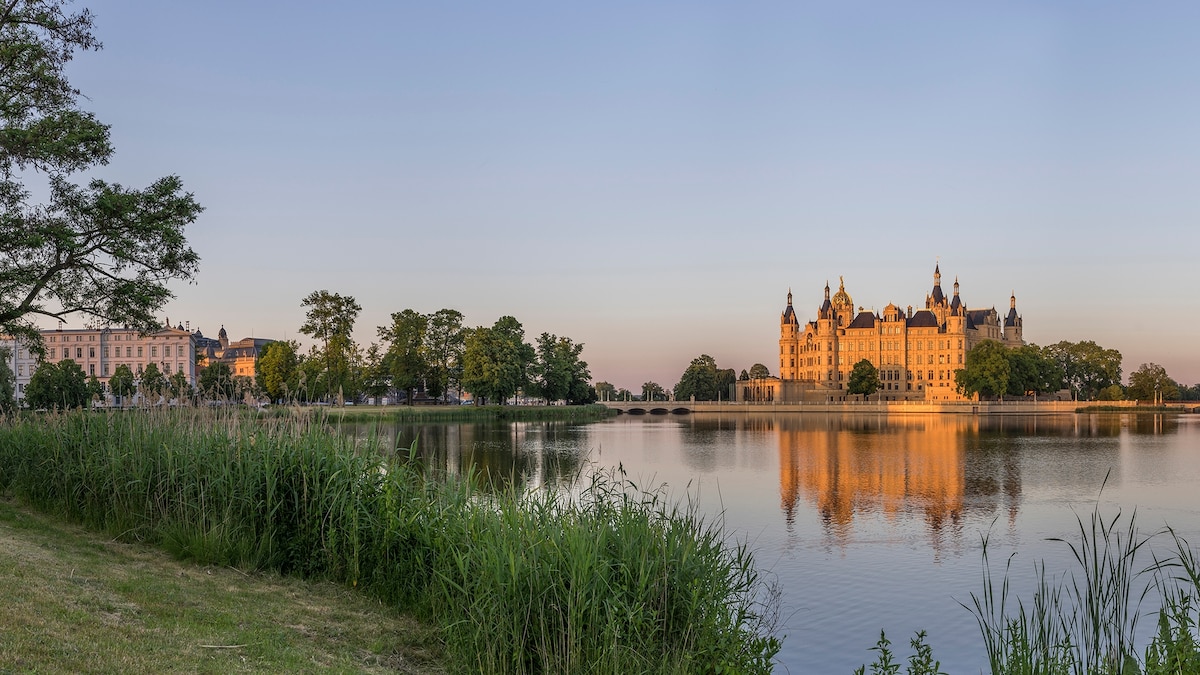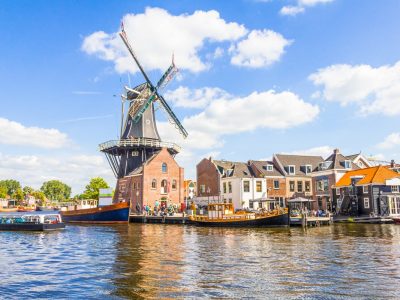This article was produced by National Geographic Traveller (UK).
A host of new sites have just been added to UNESCO’s World Heritage List — a collection encompassing over 1,000 of the world’s most spectacular cultural heritage sites. With the new additions ranging from a romantic, 19th-century German ducal capital to a biodiverse, animal-rich cave network in Bosnia and Herzegovina; Europe’s newest listings are well worth exploring.
1. Brâncuși Monumental Ensemble of Târgu Jiu, Romania
Created in 1937 to commemorate those who died defending the city of Târgu Jiu during the First World War, the Brâncuși Monumental Ensemble encompasses three abstract sculptures connected by the tree-lined boulevard, Avenue of Heroes. The distance between the 98ft-high steel spine, Endless Column, and the Table of Silence (a circular stone table representing time) encourages visitors to learn about the sacrifice of Romania’s heroes. The site is recognised for its fusion of sculpture, landscape and engineering to reflect on its history.
2. Via Appia, Italy

Many historical ruins can be found along the Via Appa highway, such as Chiesa di San Nicola di Bari, a fortified castle abandoned in 1435. Photograph by Artur Bogacki, Getty Images
Also known as ‘the Queen of roads’, this 500-mile stretch of craftsmanship is the oldest and most important Roman road. Connecting the Italian capital to Southern Italy’s seaports, the cobbled highway facilitated the growth and development of new settlements — and the Roman Empire — while driving agricultural production and trade. Journeying up this road is a transportation through time, with the original, carriage-marked paving stones flanked by reminders of Italy’s ancient past. The inscription of Via Appia brings Italy’s total amount of World Heritage Sites to 60 — more than any other country.
3. Schwerin Residence Ensemble, Germany
A picture-perfect image of ornate, traditional German architecture surrounded by the blue waters of Lake Schwerin, this cultural ensemble comprises 38 of Schwerin’s most striking and sacred landscape and architectural features. Steeped in Neo-Renaissance and neoclassical influences, the architecture of Schwerin captures the essence of 19th-century Germany with its ornamental public gardens and cultural buildings tied together by the grand, elaborate domes of Schwerin Castle.
4. Dacia, Romania

A number fortresses and watchtowers still stand along the Dacian Limes, reminding visitors of the strong military presence that existed there. Photograph by Bogdan Ionescu, Getty Images
Operational from 106 to 271 CE, Dacian Limes is the longest, most complex land border of any former European Roman province. The only province to have been entirely north of the River Danube, Dacia marks the northernmost point of what was once the Roman Empire — spanning 16 Romanian counties and a diverse range of landscapes. A network of eerie-looking, crumbling stone watchtowers, walls and fortresses still stand as witnesses to the strategic role Dacia once played.
5. The Flow Country, Scotland
In the Highlands of Scotland, extending across Caithness and Sunderland, lies one of the world’s most intact blanket bog landscapes. With around 500,000 acres of deep peatland, bog pools and ancient plants, The Flow Country is one of the world’s biggest carbon stores — a crucial mechanism in the fight against climate change. While the surrounding strath roads and Far North Train Line offer dramatic views of this lesser-known landscape, on foot is how you can experience the interlinked pool systems and diverse wildlife species up close.
6. Vjetrenica Cave, Bosnia and Herzegovina

Vjetrenica is the largest cave in Bosnia and Herzegovina, and the most biodiverse in the world. Photograph by Sanja Vrzic, Getty Images
Found in the southern side of the Dinaric Mountain range, Vjetrenica Cave is rich in underground habitats — making it a biodiversity hotspot for cave-residing fauna. A hydrologically active network of cave channels, lakes, water streams and cracks are just some of the underground living spaces that can be found along the cave’s 600 metres of tour paths. Its name, literally meaning ‘wind cave’, comes from the cold air flow that blasts visitors at the cave’s entrance — a natural phenomenon that regulates the cave’s temperature.
7. Moravian Church Settlements, Germany and UK
An extension of the pre-existing UNESCO listed settlements in Denmark and the US, Moravian communes in Germany and the UK are the latest to receive World Heritage Site status. A village in Northern Ireland, Gracehill was founded by the Moravians in 1759. Guided tours of Gracehill Old School and the Moravian Church offer visual insights into traditional, Moravian architecture. In Germany, the living Moravian heritage can be felt in the museums and church halls of Herrnhut, the birthplace of the Moravian Church.










